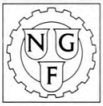Related Research Articles
International Photo-Engravers' Union of North America (IPEU) was a labor union formed in 1904 to represent halftone photoengravers in the printing industry. Its successor union is the International Brotherhood of Teamsters, Change to Win Federation.
The International Typographical Union (ITU) was a US trade union for the printing trade for newspapers and other media. It was founded on May 3, 1852, in the United States as the National Typographical Union, and changed its name to the International Typographical Union at its Albany, New York, convention in 1869 after it began organizing members in Canada. The ITU was one of the first unions to admit female members, admitting women members such as Augusta Lewis, Mary Moore and Eva Howard in 1869.

The Amalgamated Lithographers of America (ALA) is a labor union formed in 1915 to conduct collective bargaining on behalf of workers in the craft of lithography. The ALA was established through the amalgamation of several small unions already existing in the lithographic industry, one of which dated back to 1886.

The Norwegian Graphical Union was a trade union representing workers in the printing industry and related trades, in Norway.

The Printing and Kindred Trades Federation (P&KTF) was a trade union federation in the United Kingdom.

The International Typographers' Secretariat (ITS) was a global union federation bringing together unions of printers around the world.
The Bookbinders and Machine Rulers' Consolidated Union (B&MRCU) was a trade union representing people involved in the manufacturing of books in the United Kingdom.
The International Federation of Bookbinders and Kindred Trades was a global union federation representing unions of bookbinders.
The International Federation of Lithographers, Lithographic Printers and Kindred Trades (IFL) was a global union federation bringing together unions representing print workers.
The Danish Trade Union Confederation is the largest national trade union centre in Denmark. On formation in 2019, it had 79 affiliated unions, with a total of 1.4 million members.
The Graphics Federation was a trade union representing workers in the graphics and printing industries in Denmark.
The Danish Lithographers' Union was a trade union representing printers in Denmark.
The Danish Bookbinders' and Stationers' Union was a trade union representing bookbinders and workers involved in making stationery in Denmark.
The Swiss Typographers' Union was a trade union representing printers, based in Switzerland.
The Belgian Typographical Federation, also known as the Belgian Book Printers' Union, was a trade union representing printers in Belgium.
The Union of Bookworkers of Belgium was a trade union representing printers and bookbinders in Belgium.
The Swedish Bookbinders' Union was a trade union representing bookbinders in Sweden.
The Swedish Lithographic Union was a trade union representing lithographic printers in Sweden.
The Federation of Printing Workers of Luxembourg was a trade union representing workers in the printing and paper industries in Luxembourg.
The International Brotherhood of Bookbinders (IBB) was a labor union representing bookbinding workers in the United States and Canada.
References
- 1 2 3 4 "Man kan ikke være venner med alle". Arbejdermuseet. Retrieved 13 February 2020.
- 1 2 Ebbinghaus, Bernhard; Visser, Jelle (2000). Trade Unions in Western Europe Since 1945. Basingstoke: Palgrave Macmillan. p. 178. ISBN 0333771125.